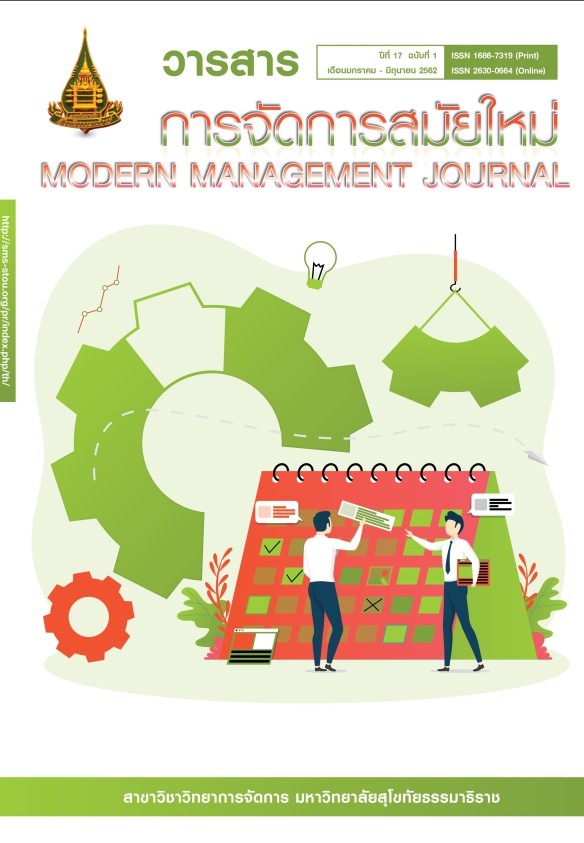การเป็นองค์กรเชิงกลยุทธ์ของกระทรวงการคลัง
คำสำคัญ:
องค์กรเชิงกลยุทธ์, กระทรวงการคลังบทคัดย่อ
ในการศึกษาวิจัยเรื่องการเป็นองค์กรเชิงกลยุทธ์ของกระทรวงการคลัง มีวัตถุประสงค์การวิจัย คือ (1) เพื่อศึกษาระดับการเป็นองค์กรเชิงกลยุทธ์ของกระทรวงการคลังที่เป็นอยู่ในปัจจุบัน (2) เพื่อศึกษาปัจจัยต่างๆ ที่มีอิทธิพลต่อการพัฒนาให้เป็นองค์กรเชิงกลยุทธ์ของกระทรวงการคลัง และ (3) เพื่อเสนอแนะการบริหารงานของกระทรวงการคลังไปสู่การเป็นองค์กรเชิงกลยุทธ์สมัยใหม่
แบบการวิจัยที่นำมาใช้ คือ การวิจัยแบบไม่ทดลอง โดยใช้การวิจัยเชิงสำรวจที่เน้นการวิจัยแบบตัดขวาง ผสมผสานกับการวิจัยเชิงคุณภาพที่เน้นการสัมภาษณ์ ประชากร คือ กระทรวงการคลัง ประกอบด้วย 9 หน่วยงาน มีตัวแทนของบุคลากรที่สังกัดสำนักนโยบายและแผนของกรมต่าง ๆ จำนวน 240 คน ผู้บริหารระดับสูง คือ ที่ปรึกษาด้านนโยบายและยุทธศาสตร์ของกระทรวงการคลังจำนวน 1 คน สำหรับขนาดตัวอย่างคำนวณโดยใช้สูตรของ Taro Yamane ณ ระดับความคลาดเคลื่อน .05 ได้กลุ่มตัวอย่างที่เป็นตัวแทนของบุคลากรที่สังกัดสำนักนโยบายและแผนของกรมต่าง ๆ รวมจำนวน 150 คน ใช้การสุ่มตัวอย่างแบบชั้นภูมิ เครื่องมือการวิจัยที่ใช้ คือ แบบสอบถาม และแบบสัมภาษณ์ สถิติที่ใช้ คือ ความถี่ ร้อยละ ค่าเฉลี่ย และค่าส่วนเบี่ยงเบนมาตรฐาน การทดสอบค่าที การวิเคราะห์การถดถอยเชิงพหุแบบขั้นตอน การวิเคราะห์ข้อมูลเชิงคุณภาพใช้วิธีการวิเคราะห์เนื้อหา
ข้อค้นพบจากการวิจัย คือ (1) ค่าเฉลี่ยความสำเร็จในการบรรลุเป้าหมายแผนยุทธศาสตร์ของกระทรวงการคลัง เท่ากับ 4.34 และผลการทดสอบสมมติฐาน คือ เป็นไปตามสมมติฐานที่ได้กำหนดไว้ การเป็นองค์กรเชิงกลยุทธ์ของกระทรวงการคลัง มีไม่ต่ำกว่าร้อยละ 80 โดยมีนัยสำคัญทางสถิติ ณ ระดับ .000 (2) เมื่อวิเคราะห์สมการถดถอย พบว่าปัจจัยการกระตุ้นการเปลี่ยนแปลงให้เกิดขึ้นแก่ผู้บริหารขององค์กร ปัจจัยการแปลงยุทธศาสตร์ไปสู่การปฏิบัติ และปัจจัยการปรับการบริหารงานองค์กรให้สอดคล้องกับยุทธศาสตร์ รวมกันมีความสามารถในการอธิบายความผันแปรเรื่องระดับการเป็นองค์กรเชิงกลยุทธ์ของกระทรวงการคลัง ได้ร้อยละ 83.7 โดยมีนัยสำคัญทางสถิติ ณ ระดับ 0.05 (3) ในการบริหารงานของกระทรวงการคลังไปสู่การเป็นองค์กรเชิงกลยุทธ์สมัยใหม่ ผู้บริหารระดับสูงจะต้องมีความผูกพันและมีความกระตือรือล้นสูงต่อการบริหารงานของกระทรวงให้บรรลุวิสัยทัศน์และเป้าหมายของกระทรวงการคลังที่กำหนดไว้ มีการทำแผนการเปลี่ยนแปลงหรือ Road Map Plan ของกระทรวงการคลังให้เห็นอย่างชัดเจน การปรับวิสัยทัศน์และกลยุทธ์ของกระทรวงการคลังให้มีความแหลมคมและชัดเจนอยู่เสมอ
เอกสารอ้างอิง
Boonyarataphan,Th. (2011). Strategic Formulation Plan of the Energy Policy and Planning Office, Ministry of Energy. Bangkok : Research Project.
Boonyarataphan,Th. (2013). Balanced Scorecard System Development of SeAH Precision Metal (Thailand) Co., Ltd. Bangkok : Research Project.
David, F. R. (1993). Strategic Management. New York : Macmillan Publishing Company.
David, F. R.(2013). Strategic Management Concepts and Cases : A Competitive Advantage Approach. Boston : Pearson.
Hitt, M. A., Ireland, R. D., & Hoskisson, R. E. (2015). Strategic Management : Competitiveness and Globalization : Concepts and Cases. Singapore : Cengage Learning Asia Pte Ltd.
Hoque, Z. (2014). 20 Years of Studies on the Balanced Scorecard: Trends, Accomplishments, Gaps, and Opportunities for Future Research, The British Accounting Review. 46. 33-59.
Jiang, D., & Liu, Z. (2014). Applicatiom of Balanced Scorecard in the GovernmentPerformance Appraisal, Open Journal of Social Sciences. 2 , 91-96.
Kaplan, R. S., & Klein, N. (1995). Chemical Bank: Implementing the Balanced Scorecard. Harvard Business School Press.
Kaplan, R. S., & Norton, D. P. (1992). The Balanced Scorecard: measures that drive performance, Harvard Business Review. Jan – Feb, 71–80.
Kaplan, R. S., & Norton, D. P. (1993). Putting the Balanced Scorecard to Work, Harvard Business Review. Sep – Oct, 2–16.
Kaplan, R. S., & Norton, D. P. (1996). Using the Balanced Scorecard as a strategic management system, Harvard Business Review. Jan – Feb, 75–85.
Kaplan, R. S., & Norton, D. P. (1996). Balanced Scorecard: Translating Strategy into Action. Harvard Business School Press.
Kaplan, R. S., & Norton, D. P. (2001). The Strategy-Focused Organization. Boston : Harvard Business School Press.
Kaplan, R. S., & Norton, D. P. (2004). Measuring the Strategic Readiness of Intangible Assets. Harvard Business Review, 82(2), 52-63.
Kaplan, R. S., & Norton, D. P. (2004). Strategy Maps. Massachusetts : Harvard Business School Press.
MacIntosh, R., & Maclean, D. (2015). Strategic Management : Strategists at Work. London : Palgrave.
Madsen, D. O., & Stenheim, T. (2015). The Balanced Scorecard : A Review of Five /Mike W. Peng.
Parnell, J. A. (2014). Strategic Management : Theory and Practice. California : SAGE Publications.
Pearce II, J. A., & Robinson, R. B. (2013). Strategic Management : Planning for Domestic & Global Competition. 14th ed. New York : McGraw-Hill Education.
Peng, M. W. Global Strategic Management (2014). Australia : South-Western Cengage Learning.
Pitt, M., & Koufopoulos, D. (2012). Essentials of Strategic Management. Los Angeles : SAGE Publication.
Prateep,C., Boonyarataphan,Th ., Udomwisawakul, N., & Smitananda, P. (2014). Review the Strategic Plan of Fuel Fund (2012-2016). Bangkok : Research Project.
Saloner, G., Shepard, A., & Padolny, J. (2001). Strategic Management. New York : John Wiley & Sons, Inc.
Schilling, M. A. (2013). Strategic Management of Technological Innovation. New York : McGraw-Hill.
Steiss, A. W. (2003). Strategic Management for Public and Nonprofit Organizations. New York : Marcel Dekker,Inc.
Reorganization of Ministry, Sub-Ministry, and Department Act, B.E. 2545
Wheelen T. L., Hunger J. D., Hoffman A. N., & Bamford C. E. (2015). Strategic Management and Business Policy : Globalization, Innovation, and Sustainability. Harlow : Pearson Education Limited.



